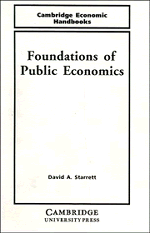Book contents
- Frontmatter
- Contents
- Preface and acknowledgments
- Notation
- PART I Scope and limitations
- PART II Decision making in a mixed economy
- 5 Planning mechanisms
- 6 Models of a mixed economy
- 7 Government budgeting and fiscal decentralization
- 8 Public pricing and optimal-commodity taxation
- PART III First-order project analysis
- PART IV Evaluating large projects
- Epilog
- References
- Author index
- Subject index
7 - Government budgeting and fiscal decentralization
Published online by Cambridge University Press: 04 April 2011
- Frontmatter
- Contents
- Preface and acknowledgments
- Notation
- PART I Scope and limitations
- PART II Decision making in a mixed economy
- 5 Planning mechanisms
- 6 Models of a mixed economy
- 7 Government budgeting and fiscal decentralization
- 8 Public pricing and optimal-commodity taxation
- PART III First-order project analysis
- PART IV Evaluating large projects
- Epilog
- References
- Author index
- Subject index
Summary
To this point, our conception of the mixed economy has treated the public sector as monolithic. However, we observe a considerable degree of government decentralization in practice, and indeed, we would expect to find some such structures in a second-best organizational design for much the same reasons we argued for market decentralization of private goods earlier. Here, we will develop a model of government structure that is roughly consistent with the actual organization of the U.S. public sector. We will emphasize normative properties of this structure, drawing on earlier discussions of political decentralization and mechanism design.
One possible approach to public-sector design would be to mimic closely the structure of market decentralization. That is, we could divide up responsibilities into a large collection of fully autonomous agencies, each of which would be responsible for the allocation of a narrow range of collective goods. Autonomy would be achieved by having each individual agency elicit information on preferences and assess separate taxes and/or user charges. To the extent that “true” information is learned, it can be used to organize finance according to the so-called benefits principle – household payments for the collective goods and services would be directly related to benefits received.
This mode of organization has many desirable features. First and foremost, it eliminates entirely the need for centralized information gathering and the associated cost of bureaucracy needed to administer and coordinate activities. Further, to the extent that the finance tax can be made a charge for services rendered, it will act like a price that will induce the relevant clientele to reveal their preferences.
- Type
- Chapter
- Information
- Foundations in Public Economics , pp. 104 - 119Publisher: Cambridge University PressPrint publication year: 1988



